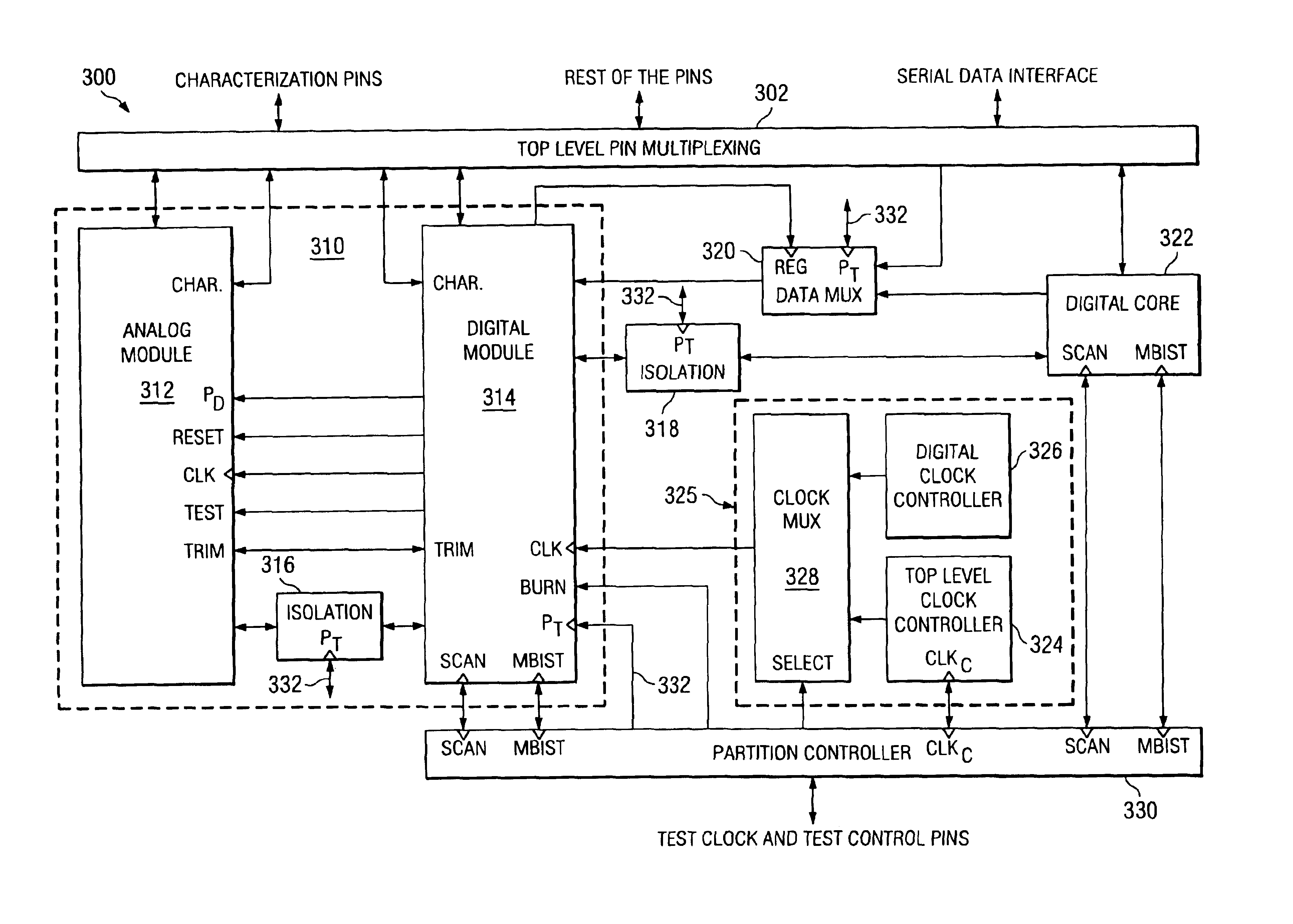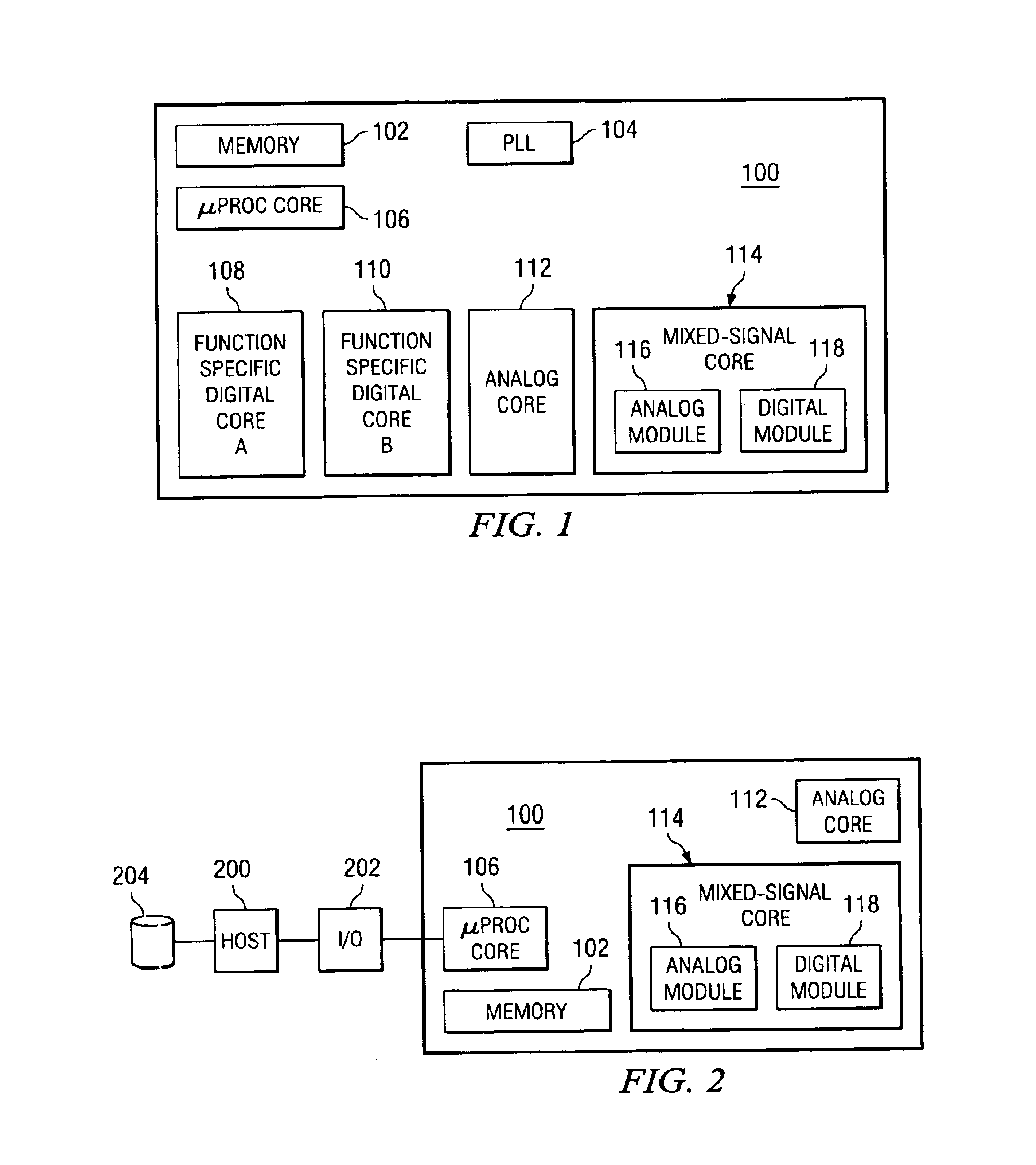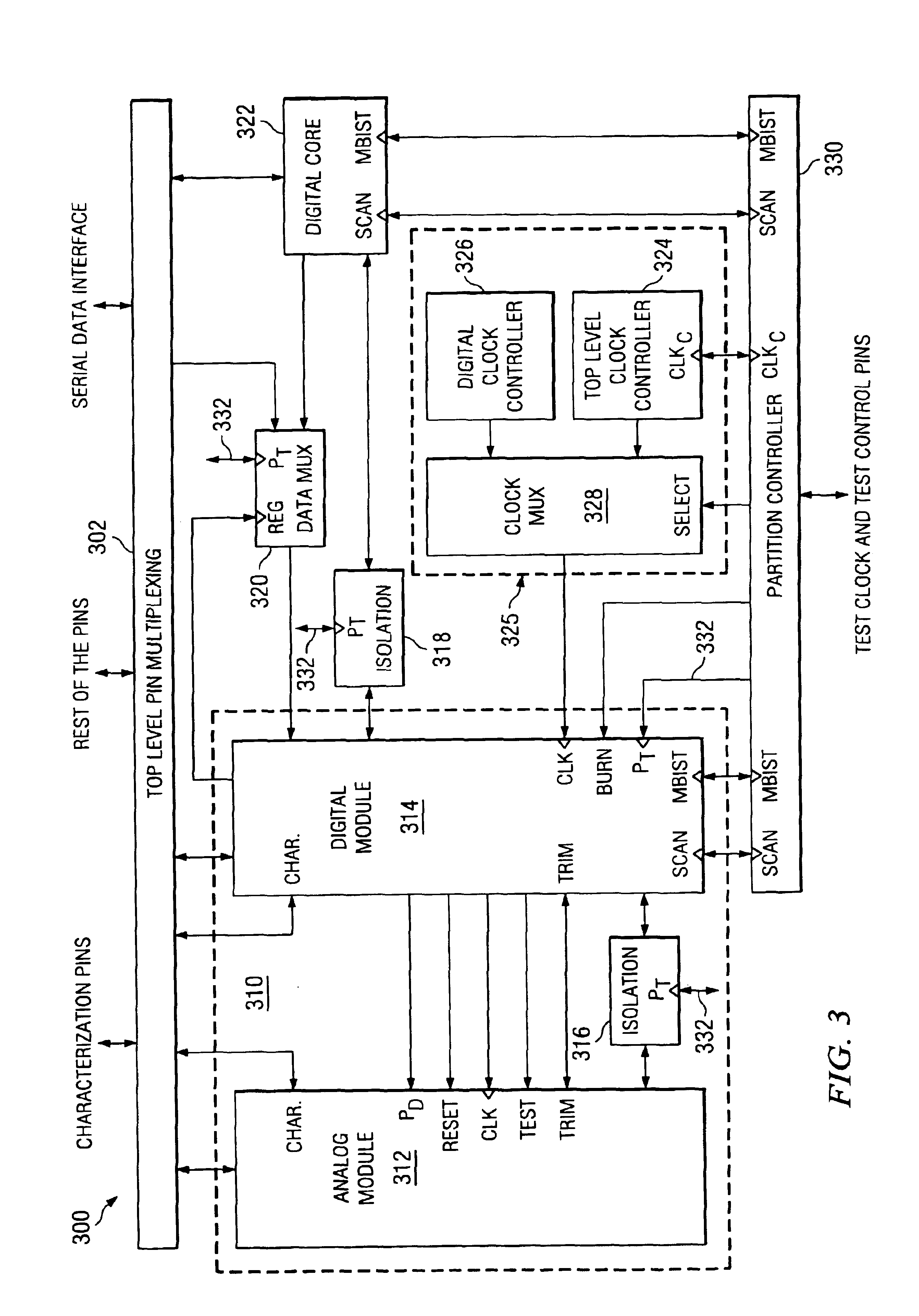Mixed-signal core design for concurrent testing of mixed-signal, analog, and digital components
a mixed-signal core and core design technology, applied in the field of methods, can solve the problems of entailing a substantial amount of complexity in testing next-generation socs, and reducing the overall test time, so as to reduce the overall test tim
- Summary
- Abstract
- Description
- Claims
- Application Information
AI Technical Summary
Benefits of technology
Problems solved by technology
Method used
Image
Examples
Embodiment Construction
[0027]The present invention will now be described more fully hereinafter with reference to the accompanying drawings, in which embodiments of the invention are shown. This invention may, however, be embodied in many different forms and should not be construed as limited to the embodiments set for the herein. Rather, these embodiments are provided so that this disclosure will be thorough and complete, and will fully convey the scope of the invention to those skilled in the art.
[0028]The present invention is best understood by comparison with the prior art. Hence, this detailed description begins with a discussion of known SoC IC similar to that shown in FIG. 1 as disclosed in U.S. Pat. No. 6,408,412 entitled “Method and Structure For Testing Embedded Analog / Mixed-Signal Cores In System-On-A-Chip”. FIG. 1 is a schematic diagram showing an example of the inner structure of such an SoC 100 that includes a memory core 102, a phase lock loop (PLL) 104, microprocessor core 106, function sp...
PUM
 Login to View More
Login to View More Abstract
Description
Claims
Application Information
 Login to View More
Login to View More - R&D
- Intellectual Property
- Life Sciences
- Materials
- Tech Scout
- Unparalleled Data Quality
- Higher Quality Content
- 60% Fewer Hallucinations
Browse by: Latest US Patents, China's latest patents, Technical Efficacy Thesaurus, Application Domain, Technology Topic, Popular Technical Reports.
© 2025 PatSnap. All rights reserved.Legal|Privacy policy|Modern Slavery Act Transparency Statement|Sitemap|About US| Contact US: help@patsnap.com



